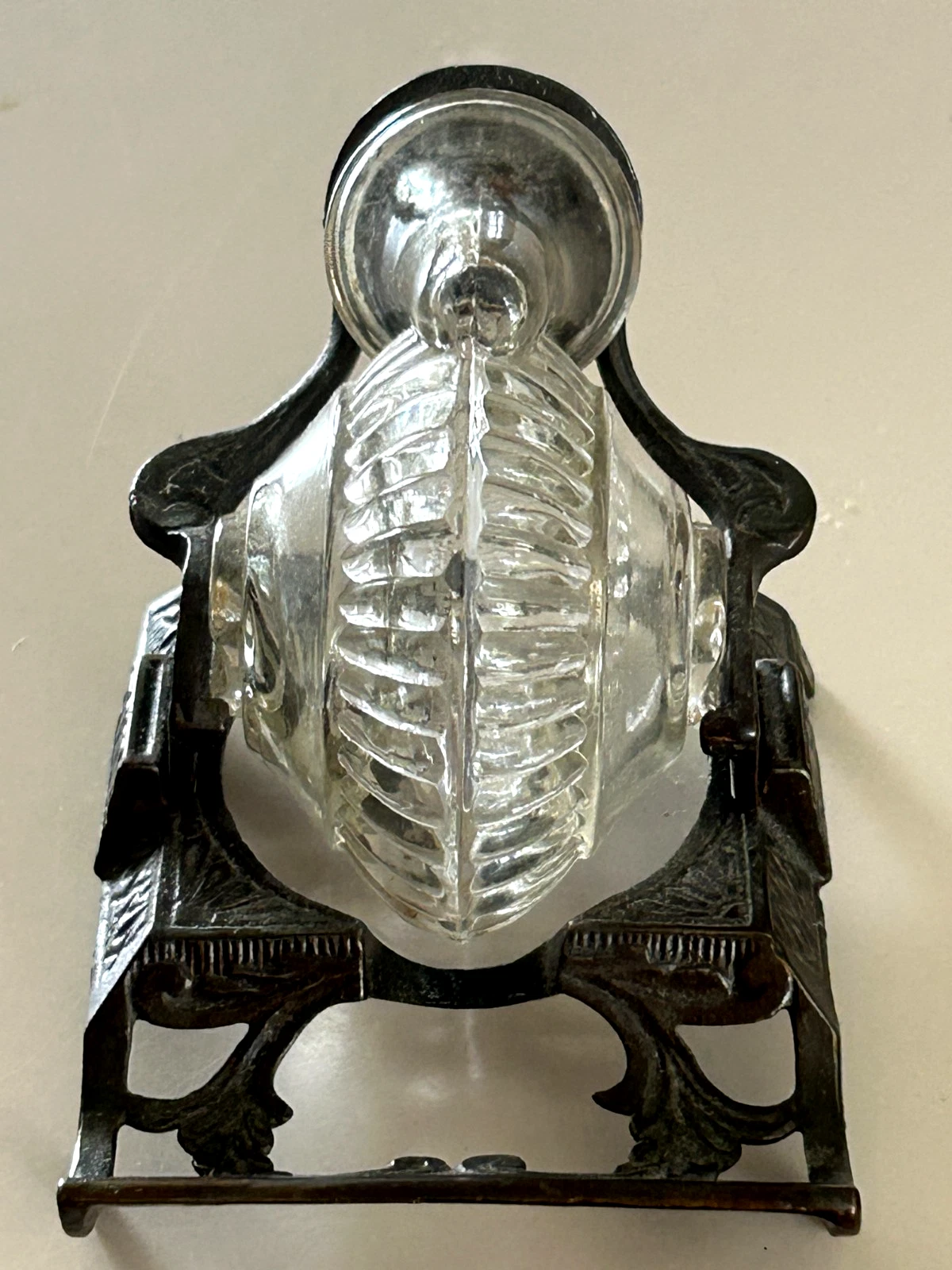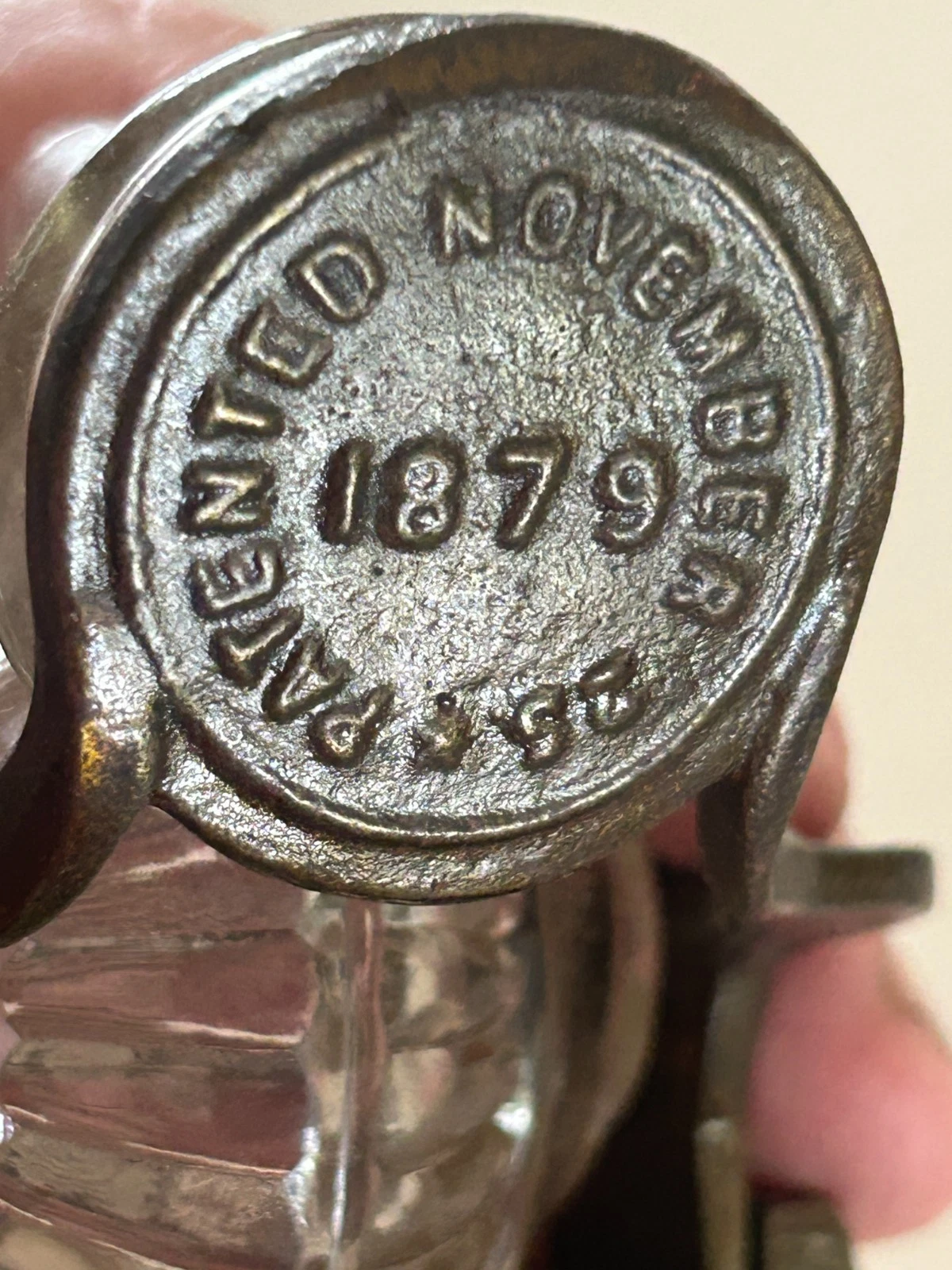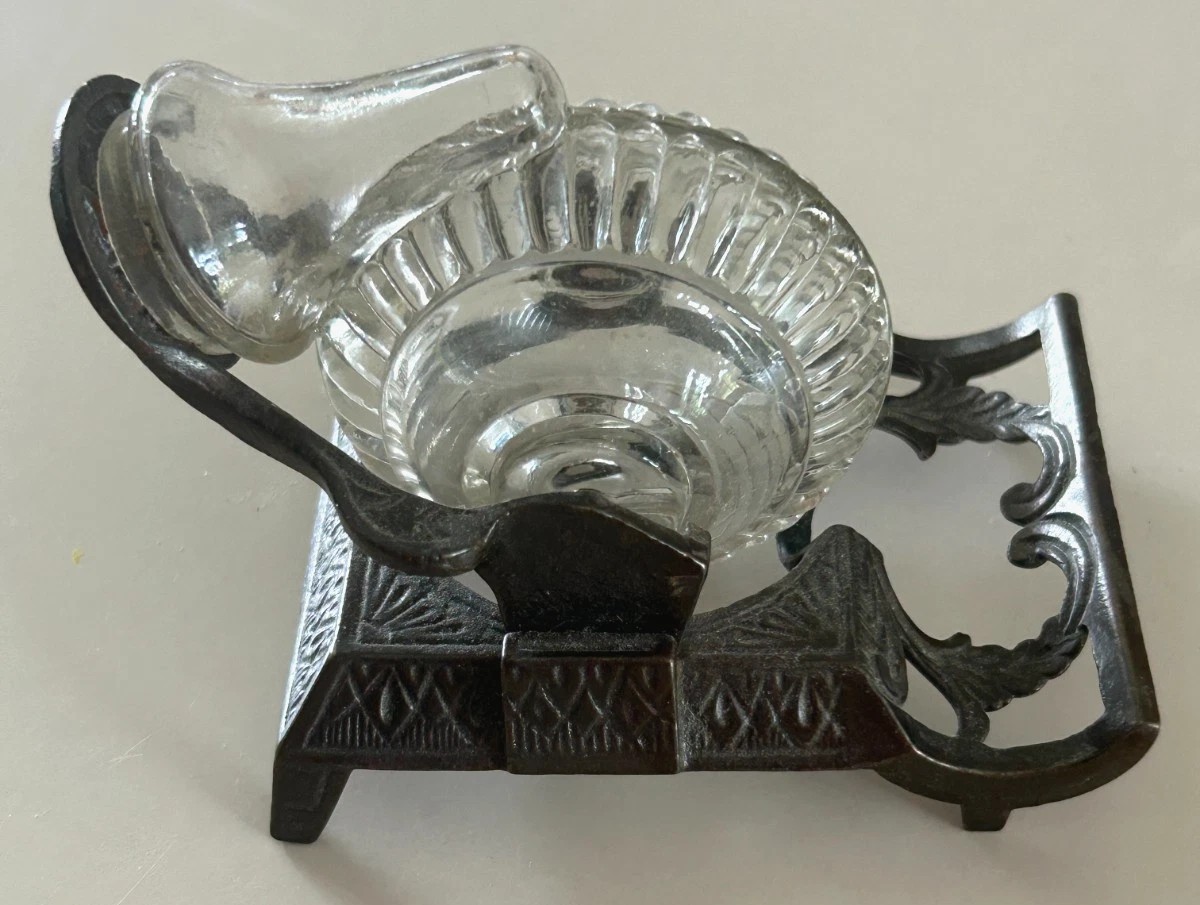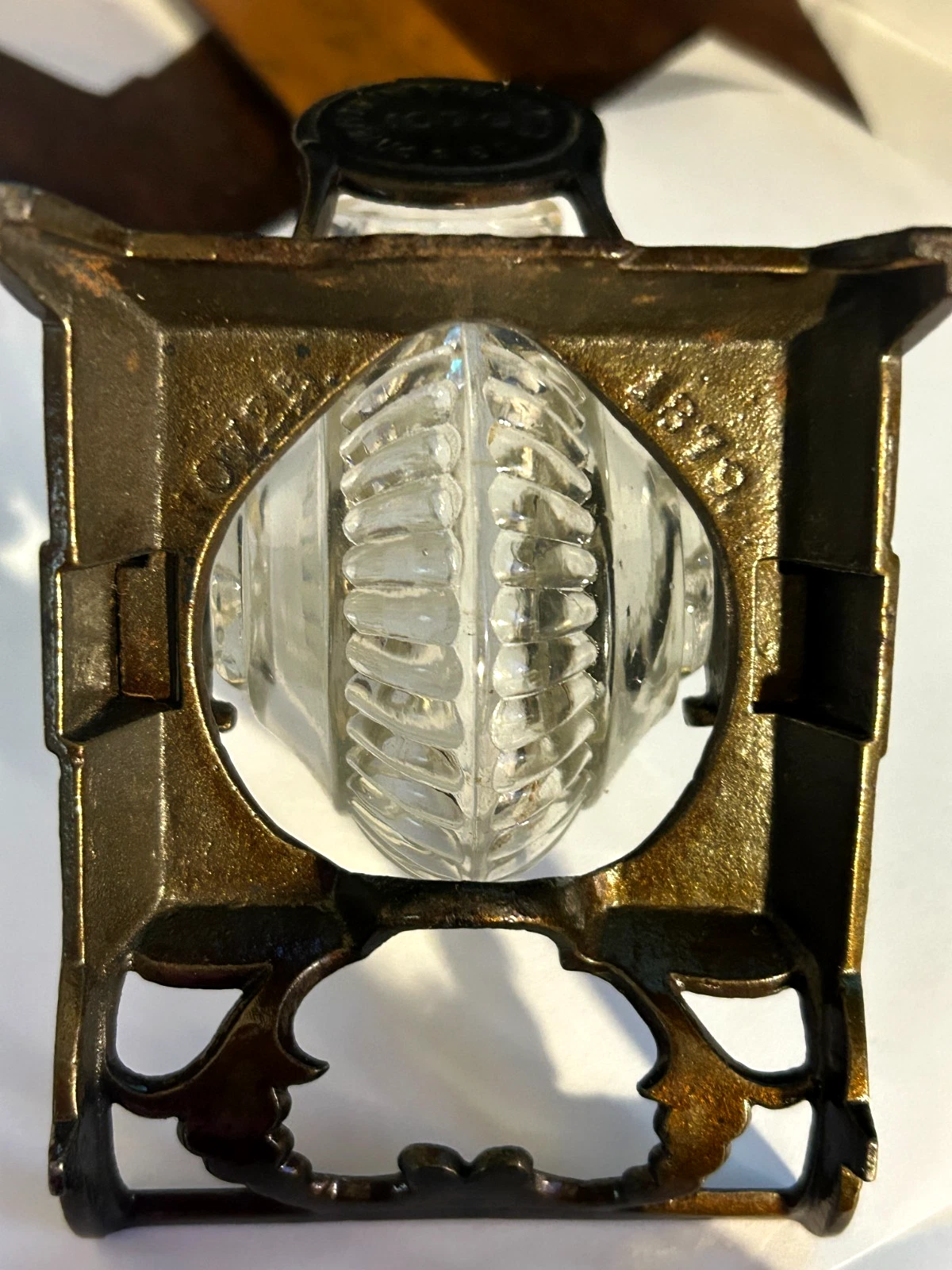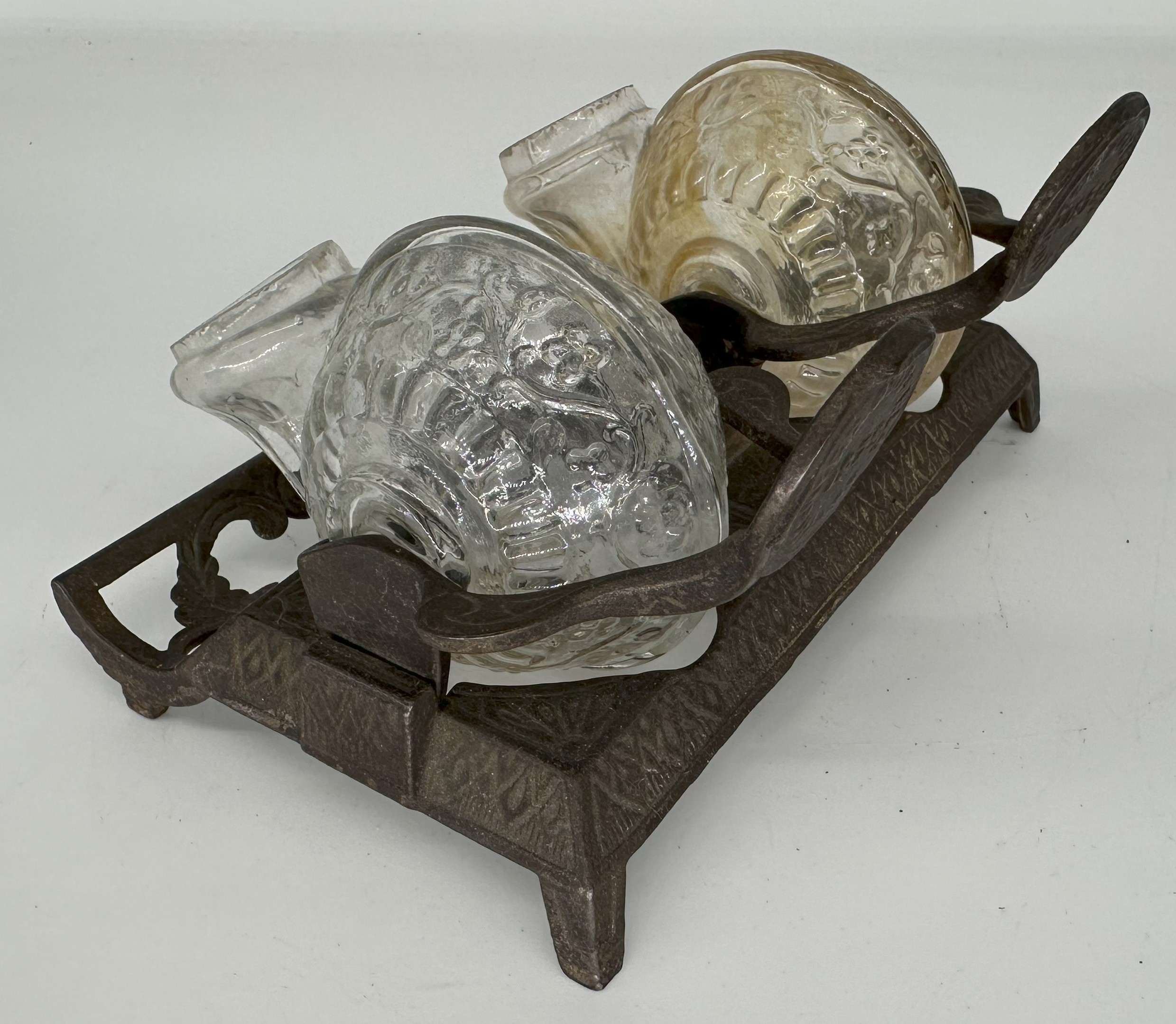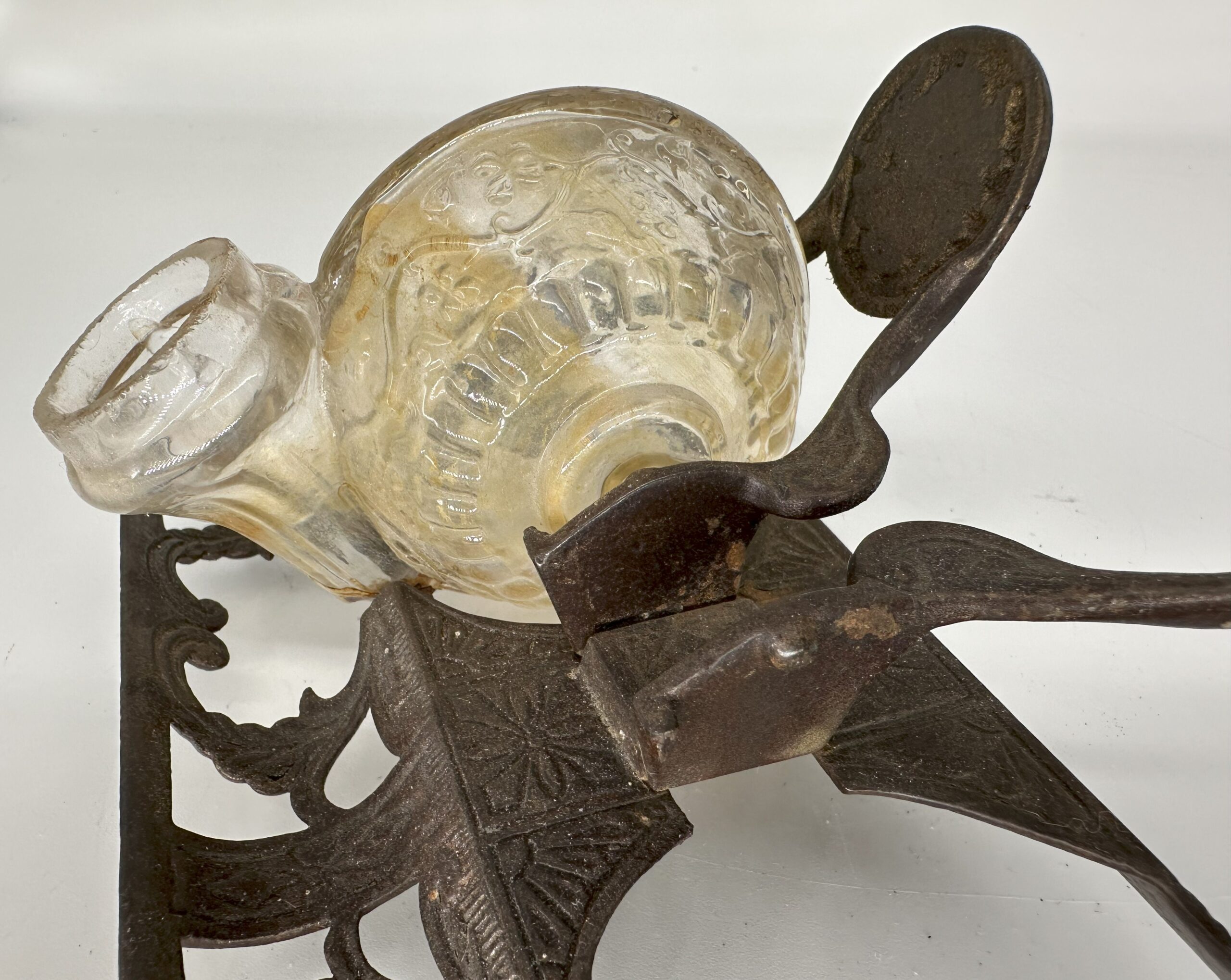
Judd Revolving (Snail) Inkstand
| Categories | Mechanical - Snail / Pivoting |
| Material | Cast iron, Glass |
| Markings | See Narrative |
| Manufacturer | H L Judd |
| Origin | United States |
| Date or Era | circa 1880 |
| Measuring | Single: 3” x 4” x 3” high; Double: 3” x 6 ⅛” x 3” high |
| Patent | Patent No. 221,965, patented November 25, 1879 |
Two versions of this A.D. Judd revolving inkstand are pictured – a single and a double reservoir. Albert D. Judd patented this “snail” inkstand (Patent No. 221,965, patented November 25, 1879).
Description of the Inkwell
This “snail” inkwell combines a revolving ink reservoir with a cast-metal base, designed for both function and aesthetic appeal.
- Design and Materials: The inkstand consists of two primary parts: a heavy, decorative, cast-iron base (finished in a bronze color) and a uniquely shaped glass ink reservoir, commonly called a “snail.”
- The Glass Reservoir (“Snail”): This ink-holder has an asymmetrical, bulbous, or spiral-like form, giving it the “snail” moniker. The sides of the glass reservoir are distinctly molded with curved grooves which align with the pivots. The glass reservoir (snail) has a font accessible when pivoted to the open position.
- The Cast-Iron Base: The base is a sturdy, tray-like piece designed to accommodate the glass inkwell. The front of the base is curved and designed to hold pens.
Summary of Albert D. Judd’s Patent No. 221,965
The patent focuses on the novel construction of the inkstand, particularly the mechanism for securing, revolving, and easily removing the glass ink reservoir.
Key Features of the Patent:
- Pivot and Rotation (Opening and Closing):
- The glass ink reservoir is designed to pivot (revolve) within the metal base to open and close access to the ink.
- The glass “snail” is held by a horizontal pivot pin that is part of the metal yoke attached to the cast-iron base.
- To use the ink, the user rotates the “snail”, so the pen-dip opening is accessible. To close it, the user rotates the glass back, which effectively seals the opening against a stopper.
- Fitting and Removal of the Glass Reservoir:
- Part of the innovation is how the glass is held securely yet made easily removable for refilling and cleaning.
- The patent utilizes the molded grooves or ribs on the glass in conjunction with a corresponding fitting in the metal base.
- The glass reservoir fits into a metal pivot within the base. The grooves on the glass engage with a friction-fit socket.
- To remove the glass reservoir for cleaning or filling, the user simply must lift the glass straight up once it is rotated to the correct open position. The patent emphasizes that this design allows the entire glass reservoir to be lifted out without disassembling anything.
- Function of the Curved Front Base:
- The forward, curved, and grooved portion of the base has a pierced leaf decoration and serves as an openwork pen rest.
Single sold for $150 in September 2025; Double sold for $95 in February 2025
Content disclaimer. The information posted is the owner’s best knowledge and may not have been vetted by the SOIC. We welcome comments, corrections, and additions, working to make our website information comprehensive and accurate.
Join the Society of Inkwell Collectors (SOIC) – it’s free!
Founded in 1981 as a non-profit organization,
we are documenting inkwells (and accessories).
We’re here to help and inform!




